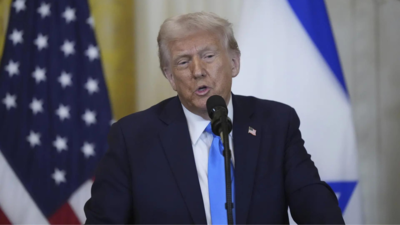The Trump administration is once again rewriting the rules—this time, with a seismic shake-up in education policy. According to The Wall Street Journal, Trump is pushing to dismantle the U.S. Education Department altogether. Reports suggest that dozens of employees have already been placed on unexplained paid leave, fueling speculation of a drastic overhaul.
This isn’t just bureaucratic restructuring—it’s a move that could redefine America’s education priorities. At stake? Billions in funding, civil rights protections, and financial aid for millions of students. Advocates call it a win for local control; critics warn of devastation for underprivileged communities.
Trump’s camp argues that gutting the department will revive a struggling education system—particularly in tech hubs like Silicon Valley. But is this a reformist leap or a reckless gamble? Here’s what happens if the Education Department disappears.
K-12 funding crisis
One of the far-reaching and immediate consequences of bidding adieu to the Department of Education would be the disruption of federal funding for K -12 schools. Currently, billions of dollars flow through initiatives like Title I, which supports schools in low-income communities. If the federal umbrella drifts away, states and local governments will carry the accountability for funding- an uneven and unreliable system that can deepen the prevailing systemic disparities. Wealthier districts will continue to encounter an upward trajectory in growth whereas underfunded areas will witness schools grappling for basic amenities and resources.
Civil rights at risk
The Department of Education has long stood as a bulwark and kingpin safeguard against discrimination in schools. Its Office for Civil Rights (OCR) enforces Title IX, the Individuals with Disabilities Education Act (IDEA), and other protections that prevent racial, gender-based, and disability-related discrimination. If these duties are scattered across state agencies, protections will likely become inconsistent and fragile. The lack of federal enforcement could embolden institutions that seek to bypass civil rights laws, putting marginalized students at higher risk of discrimination and exclusion.
Student loan chaos
The Department of Education manages more than $1.6 trillion in federal student loan debt and administers critical financial aid programs like Pell Grants. Bifurcating this responsibility to the Department of the Treasury or private lenders could result in chaos—a surge in borrowing costs, inefficient administration, and weakened borrower protections. Millions of students who rely on federal assistance to attend college could find themselves navigating an unpredictable system, with predatory lending practices making a resurgence.
Special education in jeopardy
The Individuals with Disabilities Education Act (IDEA) guarantees tailored educational support for students with disabilities. Shattering the Department of Education will leave states solely responsible for vindicating these provisions, leading to widening disparities in service availability and quality. Students with special needs could face longer wait times for services, reduced access to individualized education plans (IEPs), and an overall decline in support.
Decline in research and innovation
The federal government funds billions of dollars in research grants for universities, particularly in STEM fields. If the Department of Education disappears, this funding could dwindle, severely hampering scientific and technological advancements. Universities relying on federal grants to conduct groundbreaking research may struggle to secure alternative sources of funding, slowing progress in medicine, engineering, and innovation-driven industries.
Poor teaching standards
One of the primary responsibilities of the Department of Education is to have a benchmark on the teacher training and certification benchmarks that ensure educational consistency across the states. If this oversight swifts away, states will formulate their own standards, potentially leading to a patched, fragmented, and inconsistent teaching workforce. Some states may lower their requirements to cater to teacher shortages, resulting in an influx of underqualified educators in classrooms, depreciating the quality of teaching and learning outcomes.
